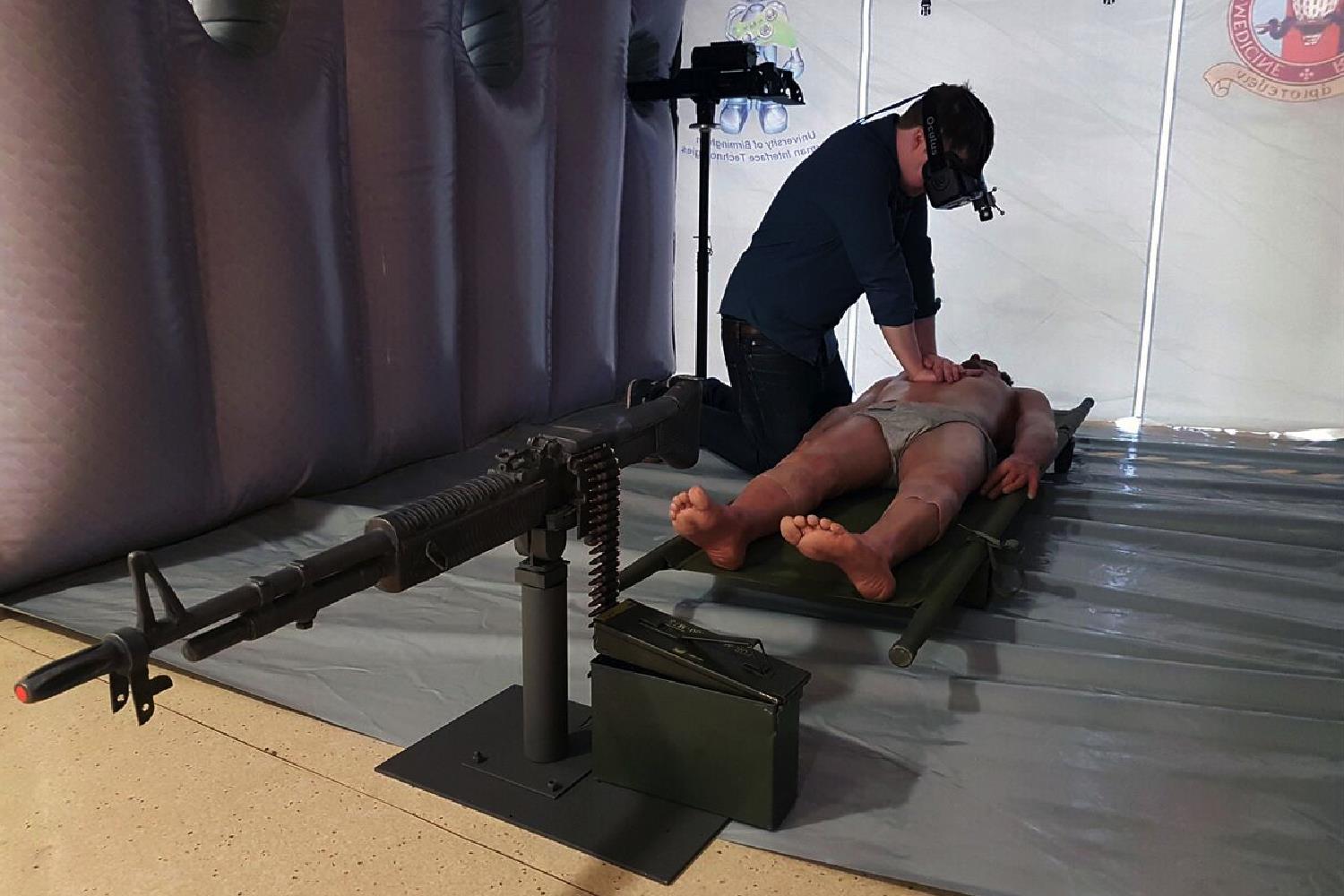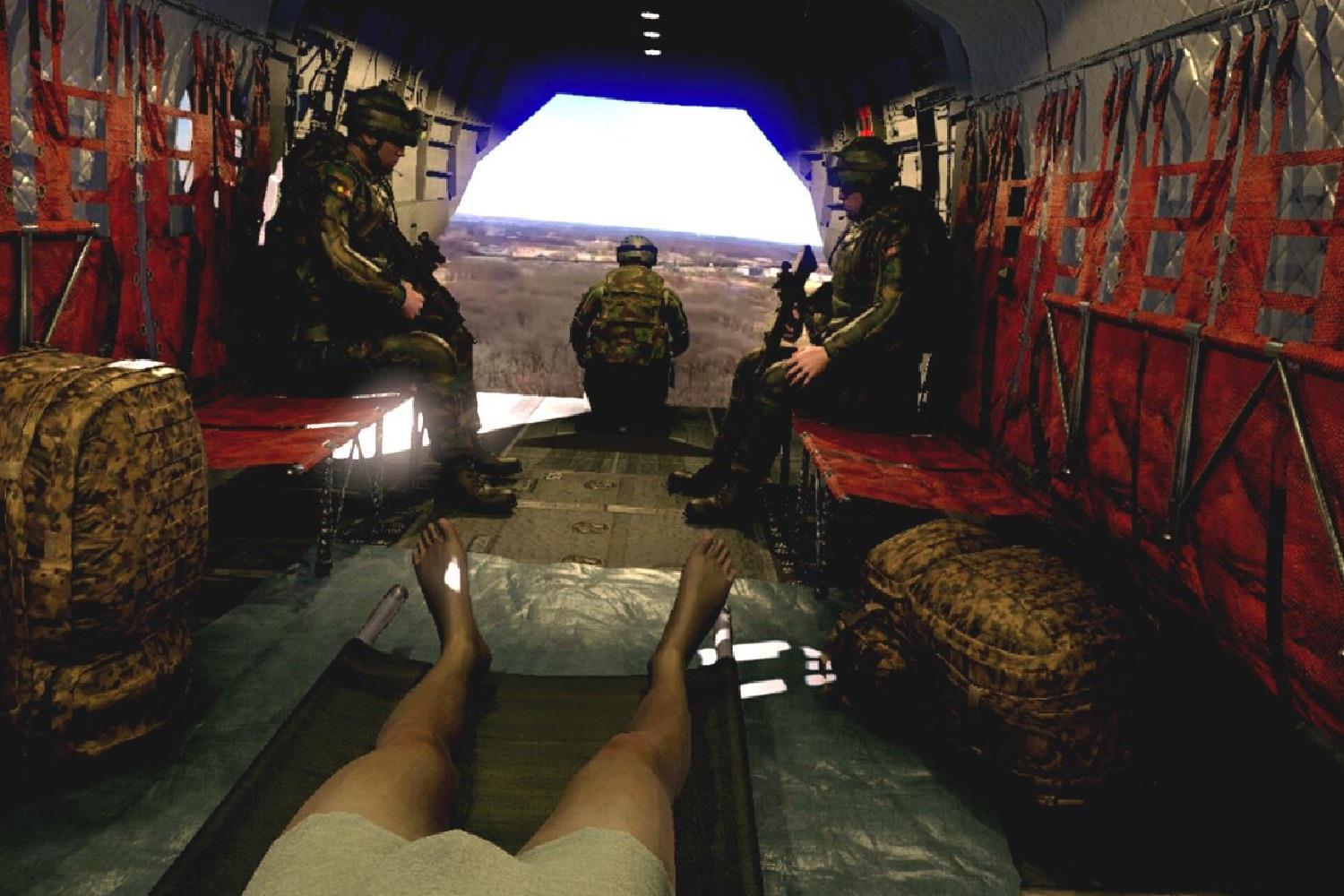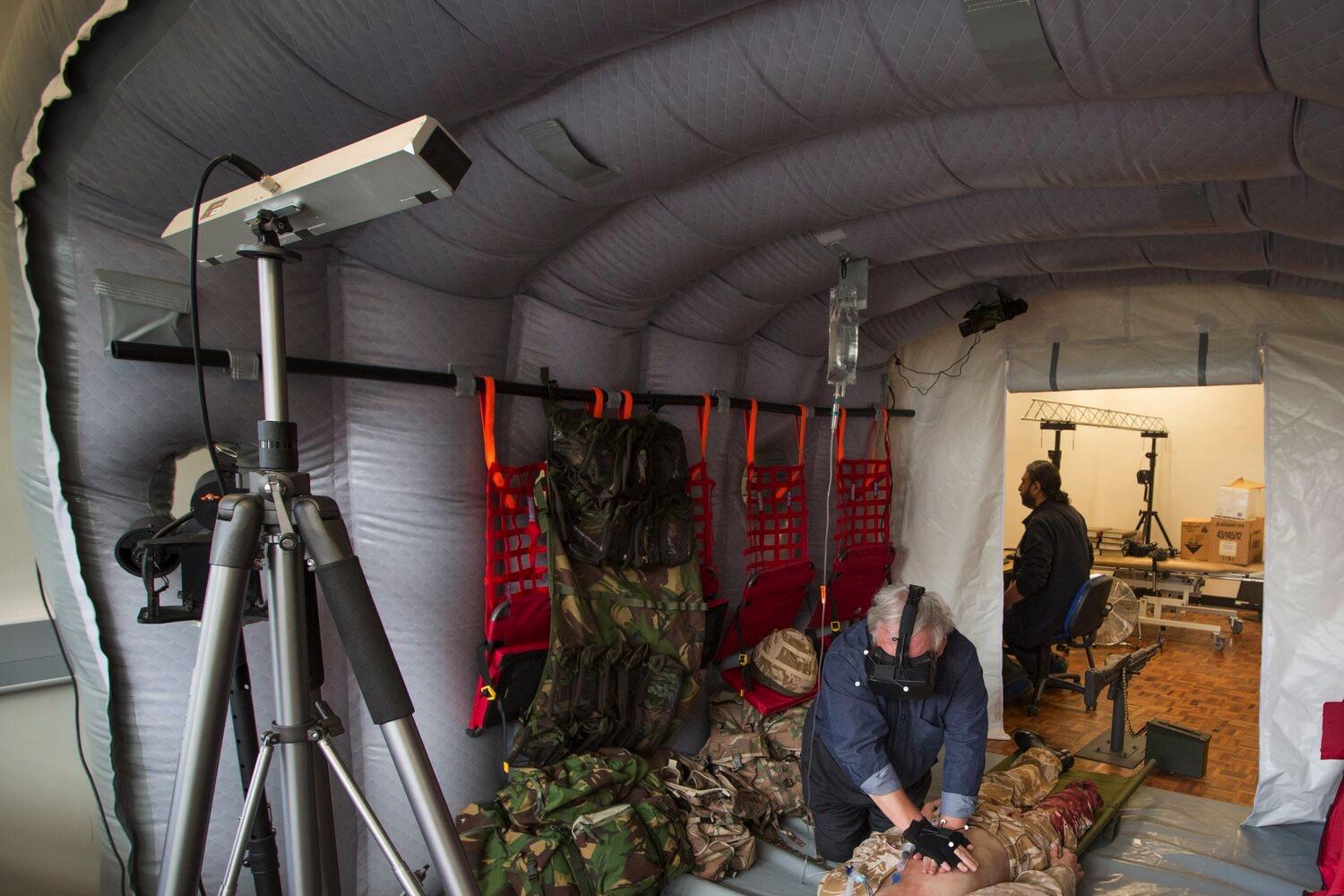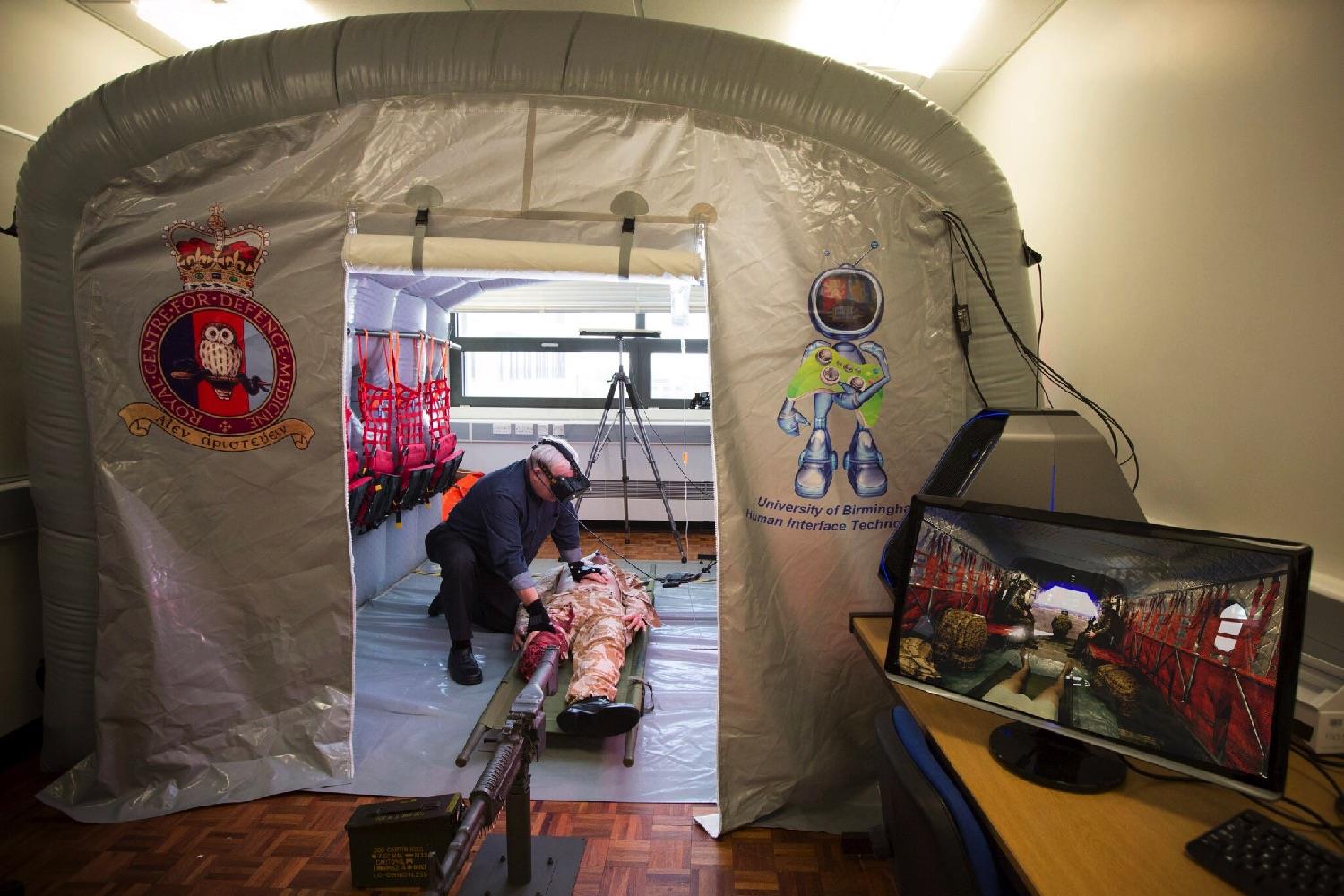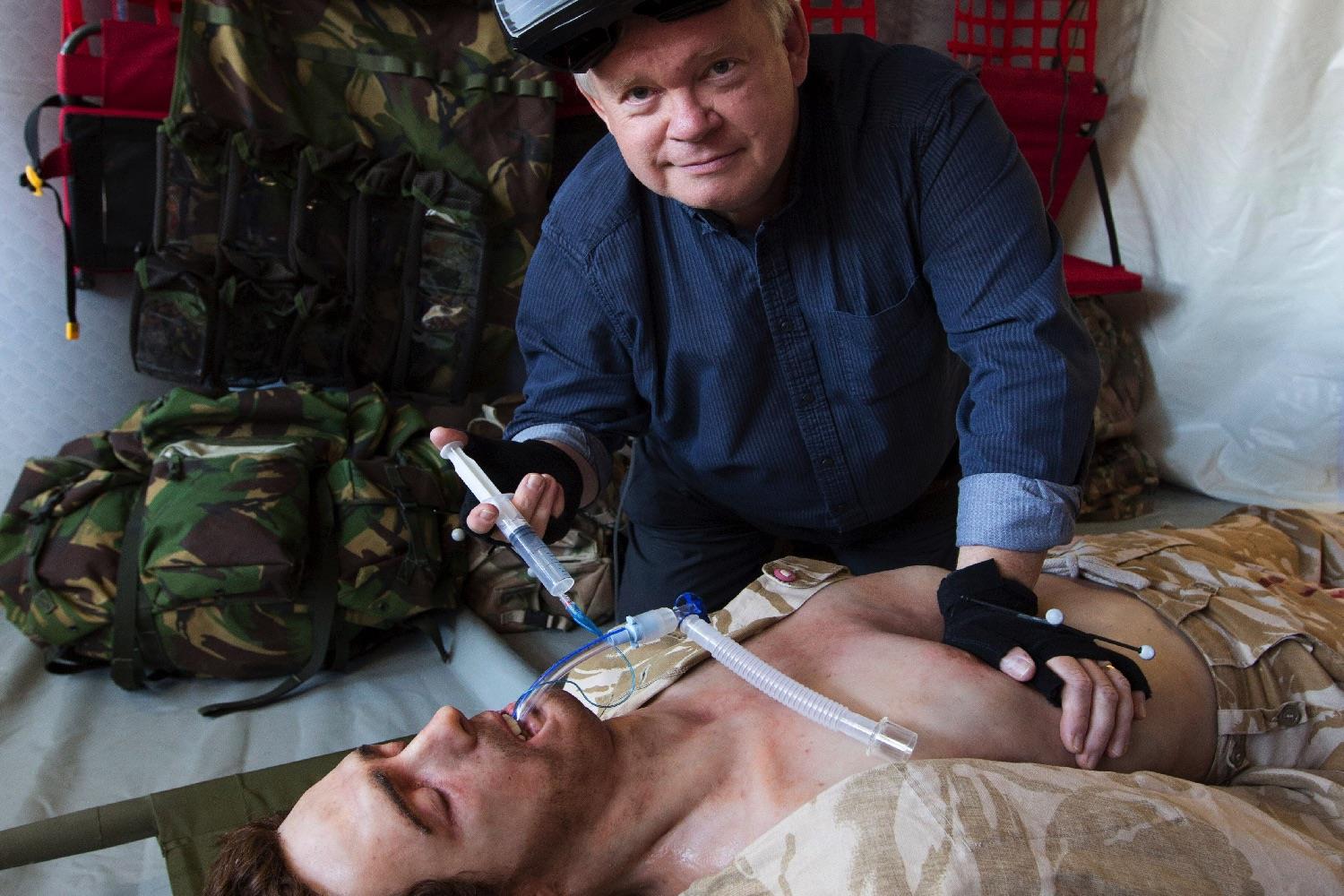Training army medics to carry out lifesaving operations in the stressful surroundings of a real warzone poses a challenge that nobody has a satisfactory answer to quite yet — until now, that is.
That’s because a team of researchers in the Human Interface Technology (HIT) department of the UK’s University of Birmingham have created an augmented reality VR scenario which takes on exactly this problem. Led by Professor Bob Stone, a 30-year veteran of virtual reality, the project recreates the experience of carrying out a resuscitation aboard a Chinook military helicopter — complete with turbulence and background machine gun fire to contend with.
“In the UK, there are only two physical ground trainers that exist,” Professor Stone tells Digital Trends. “These are wooden mockups of a Chinook helicopter, which people can use for training — provided they can reach them. But the problem is that technology is constantly changing. There are new helicopters and different military vehicles coming online constantly. Training needs to change to suit this. That’s where virtual reality can really help. It provides a low-cost adaptable training tool.”
The VR Chinook project is a collaboration between Stone’s team and other entities like the Royal Centre for Defence Medicine. Additional groups chipped in with their own expertise — such as Boeing Defence UK which provided realistic sound effects for the interior of the helicopter cabin.
“The idea is that we have an inflatable enclosure which can be inflated to give a sense of confinement, based on the interior dimensions of a small part of a Chinook,” Stone continues. “We also have a very realistic prosthetic body, various guns and weapon packs, and then we use virtual reality to configure the rest of the experience. What we’re experimenting with is exactly how much of the physical world and how much of the virtual world is needed to create convincing scenarios.”
He notes the original plan called for the experience to run on Oculus, but this turned out to be too difficult to integrate with Unity3d, the rendering engine the team used. Instead they started work with OSVR, the Open-Source Virtual Reality headset, before shifting to HTC Vive — which Professor Stone says provides the best experience yet.
The plan, he says, is that one day virtual reality will be a standard part of the training package for jobs like military medics. “It’s still incredibly new,” he adds. “The technology is changing at an incredibly fast pace — but it’s looking more and more credible by the day.”
